A Tale of Two Houses
Writer John Zeaman | Location Paterson, NJ, Haledon, NJ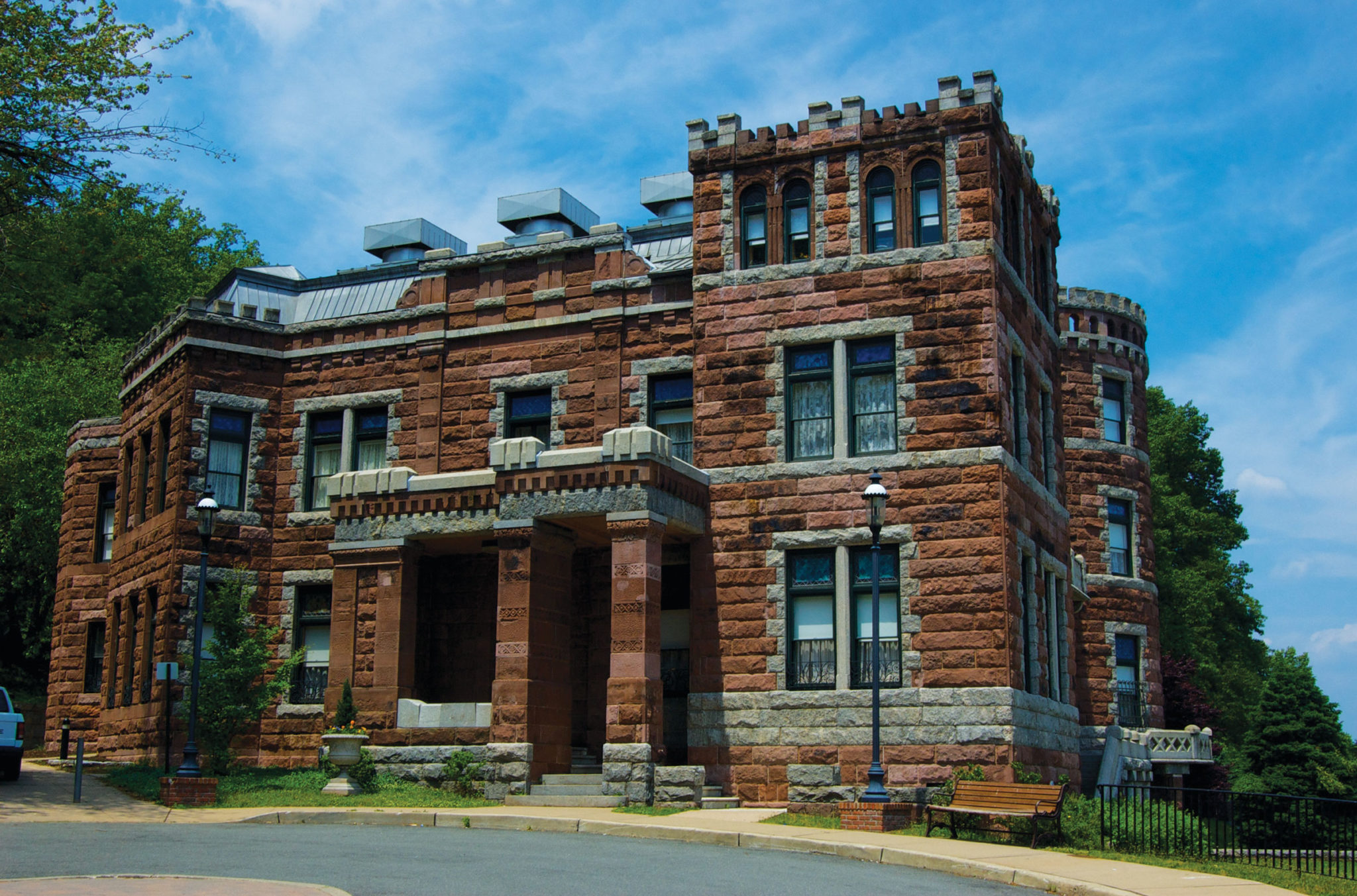
Millionaire Catholina Lambert built his dream mansion in Collegiate Gothic style in 1892 on a high point overlooking Paterson, New Jersey. Courtesy of the Passaic County Historical Society.
Lambert Castle and the Botto Residence tell opposite sides of a story
In 1892, a Paterson, New Jersey millionaire named Catholina Lambert set out to build the mansion of his dreams. Mansions were not that unusual in what was then known as “Silk City.” Paterson, which had harnessed the power of the Great Falls, was an industrial powerhouse that produced many wealthy men. But the style of Lambert’s mansion stood out. It was a medieval fantasy, a castle right out of Camelot, like those he remembered from his childhood in England. The house was built of granite and sandstone with fortress-like crenellation. It perched atop a prominence in the Watchung Mountains that afforded a spectacular view of Paterson. He named it Belle Vista. In its well-appointed interior were a three-story atrium, a stained-glass window, ornate mantelpieces and corkscrew columns. Four years later, he added an art gallery and a 70-foot-high gothic tower.
In the same year Lambert started building his castle, Pietro Botto, an Italian weaver, arrived with his wife and child to seek his fortune in America. He found work in one of the Paterson, NJ-area mills and after 15 years had saved enough to purchase land in the streetcar suburb of Haledon, New Jersey. He built a boxy 12-room house out of concrete blocks, beveled to look like stone. To soften the appearance of the front, he added a two-gabled wood façade, with a balcony on the second floor and an inviting porch. In the back and side yards he started vegetable gardens and a grape arbor that would support homemade wine production. Botto and his wife, Maria, who worked as a silk inspector, raised four daughters there.
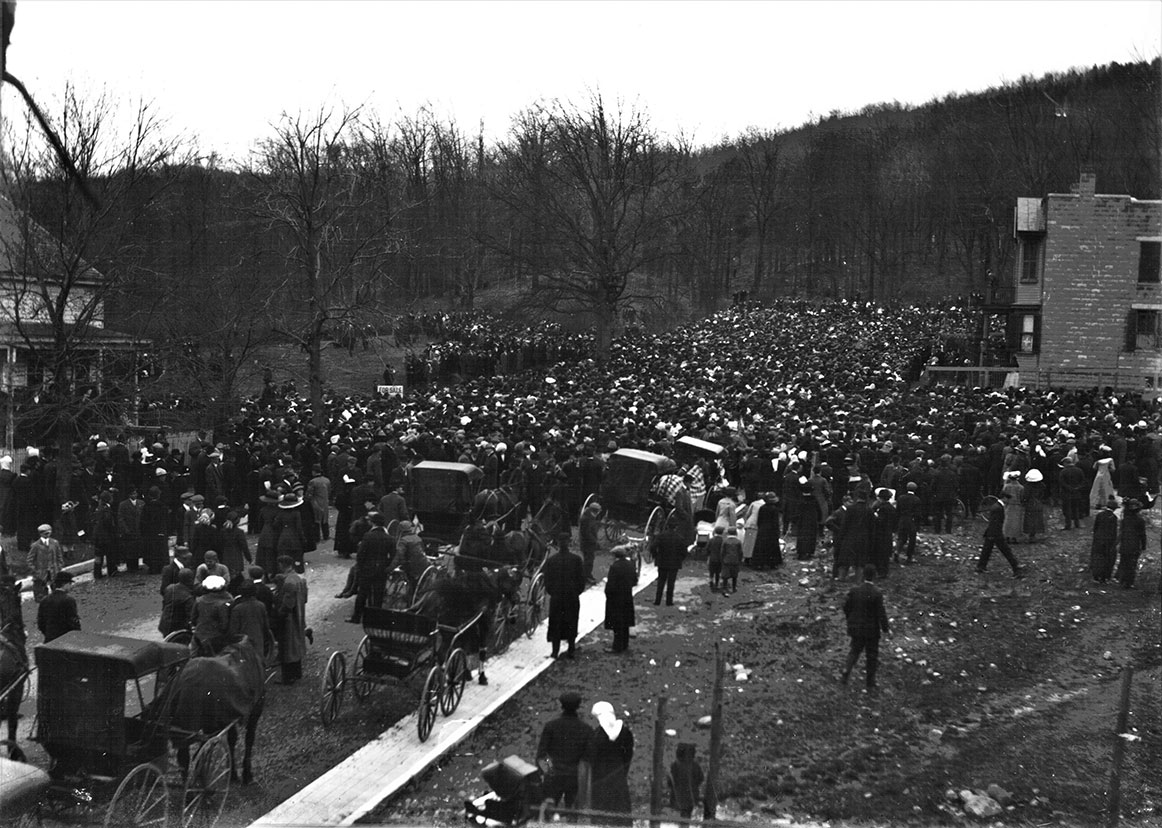
The Botto House was the meeting place for over 20,000 silk mill workers during the 1913 Paterson Silk Strike. This crowd scene shows strikers assembled outside of the house listening to a leader of the Industrial Workers of the World speaking from the second-floor balcony (the Botto House is the structure at far right in the photo). Courtesy of the American Labor Museum.
It was the best of times. Two decades later, it was, if not the worst of times, difficult ones. The year was 1913. Botto and thousands of his fellow workers had gone on strike. The immediate cause was a demand by owners that weavers run four looms simultaneously instead of two. “The move would have put half of them out of work,” says Angelica Santomauro, director of what is now the American Labor Museum at the Botto House. Workers were also asking for better wages, an eight-hour day and an end to child labor. The strike closed 300 mills and attracted national attention. Activists from the Industrial Workers of the World such as Big Bill Haywood, John Reed and Elizabeth Gurley Flynn helped the workers organize. Paterson, NJ’s mayor had blocked the workers from gathering, but Haledon, NJ’s mayor, a socialist, welcomed them. The Botto house became the strike’s headquarters. Speakers, including famous author Upton Sinclair, addressed crowds of up to 25,000 people from the Botto balcony.
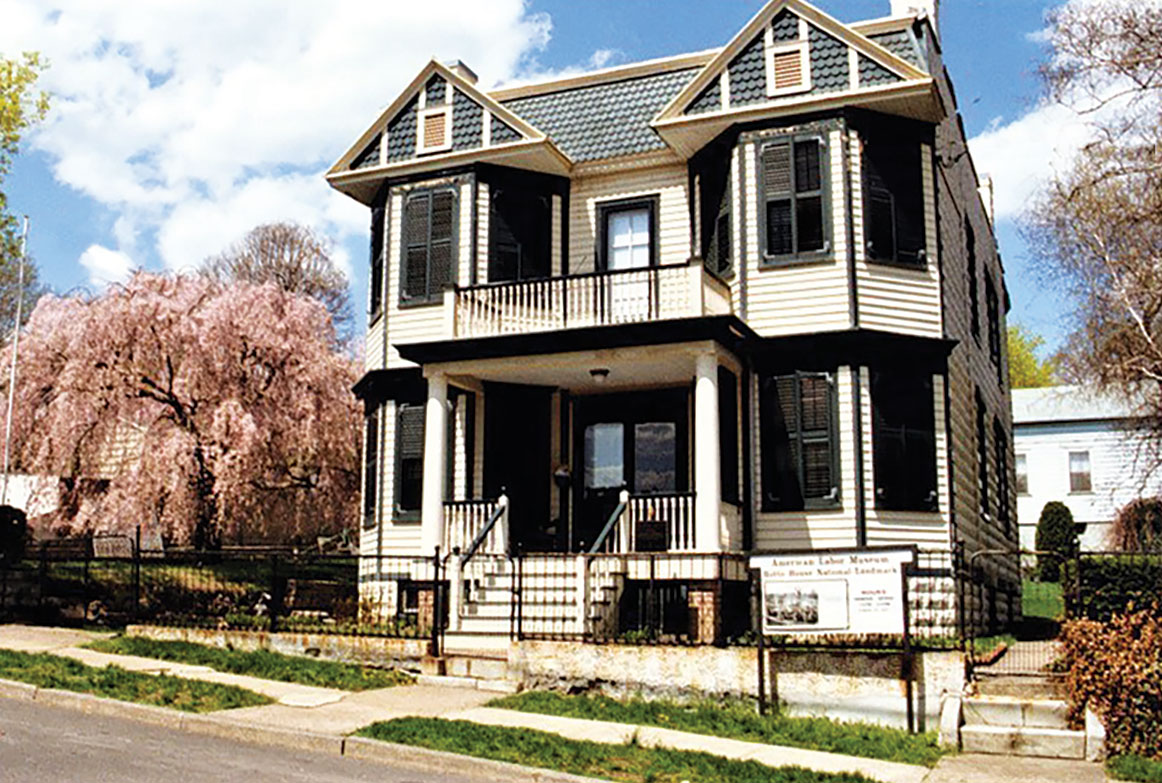
The American Labor Museum at the Botto House in Haledon recounts the difficult, and eventually successful, fight for workers’ rights. Courtesy of the American Labor Museum.
The strike went on for five months. Families like the Bottos had to put their children in foster homes to ensure they got enough to eat. In the end, despite all the support, including a fund-raising pageant in New York City’s Madison Square Garden, the strike ended in a stalemate. The workers earned a concession on the four-loom efficiency plan. Weavers had to run only two. But they failed to win an eight-hour day, an end to child labor or better wages.
Paterson, New Jersey was never the same after the big strike. Lambert, in particular, was hit hard, both by the walkout and World War I’s effect on global trade. In 1916, he was forced to auction off his beloved art collection to pay off creditors. The museum-quality art, once valued at $1.5 million, brought in just a little more than a third of that. But Lambert kept his castle. He lived there until his death in 1923. The Bottos kept their house too. It helped pay for itself with extra bedrooms for boarders and a second-floor kitchen for tenants. Descendants of the Bottos continued to live in the house until 1984, when it was acquired by a non-profit and eventually turned into a museum.
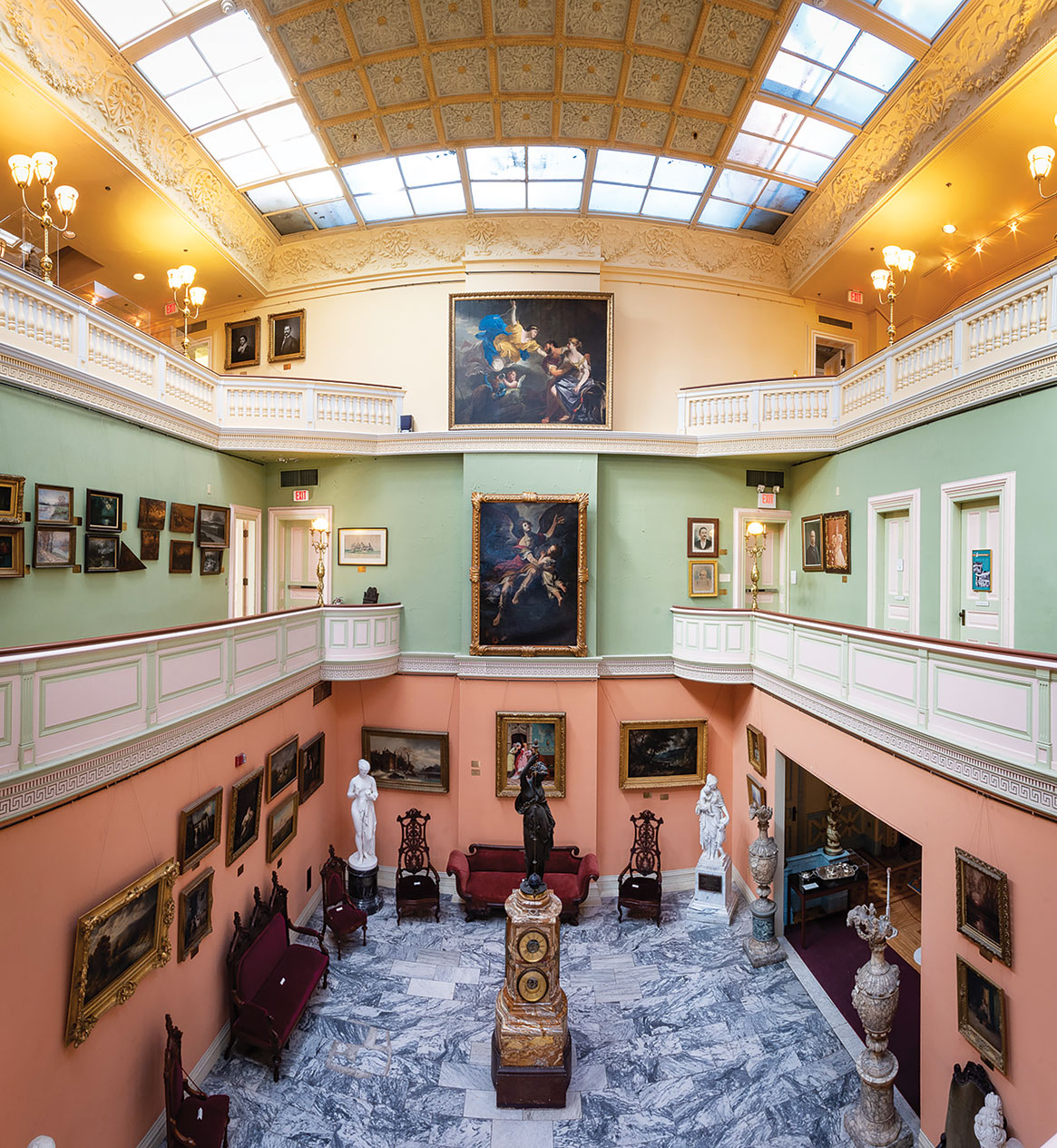
The three-story atrium (now) houses many pieces from the collection. Photo by Michael Einreinhof of Arclight Images/Courtesy of Passaic County, NJ.
Lambert Castle took a more meandering path to house museum. Lambert’s son, Walter, sold the building to the City of Paterson, NJ in 1925. It was used for various purposes, including a tuberculosis sanitorium. In 1928, the title was transferred to the Passaic County, New Jersey Parks Commission. In 1934, the Passaic County Historical Society established a museum and library in the building. Over the years, the museum functions have expanded. Between 1995 and 2000, the castle underwent a $5 million restoration that reawakened its former splendor.
From the outside, Lambert Castle looks nothing like contemporary mansions. Its architecture might be called Collegiate Gothic, the style used on college campuses or municipal libraries to evoke a link with the past. Two stone lions flank the entrance. To the north is the vista of Paterson that gave the house its name. It is now upstaged by a view to the east that didn’t exist in 1892: the New York City skyline.
The interior beautifully evokes the sparkle of the Gilded Age, particularly a three-story atrium lined by balconies. Lifesize figurative sculptures of mythical figures such as Pandora and Hercules command the floor. Paintings ascend the walls. After Lambert’s death and the house’s conversion to institutional use, most of the furnishings were sold and found their way into local homes and businesses. When it became a museum, many things were donated back, such as the great dining room table. For years, it served as the boardroom table for a local bank. Now the table is back in the reconstituted dining room, looking just as it did in period photographs, except for the absence of the carved initial “L” that was sanded off for its boardroom sojourn. Another piece returned from a bank is a nearly 14-foot conical clock, so named because its pendulum moves in a circular motion rather than back and forth. A bronze female figure atop an onyx pedestal dangles the pendulum while dials below display the time of day, the date, the temperature, the barometric pressure and the time in other zones.
Had Lambert not lost his art collection a visit there today would be like going to the Frick Museum or the Morgan Library. President William McKinley visited and said it had “the makings of an American Louvre.” Unlike other wealthy Victorian collectors, Lambert formed his collection without the aid of art advisers. He bought Renaissance paintings by Andrea Del Sarto and Sandro Botticelli as well as those by the French impressionists.
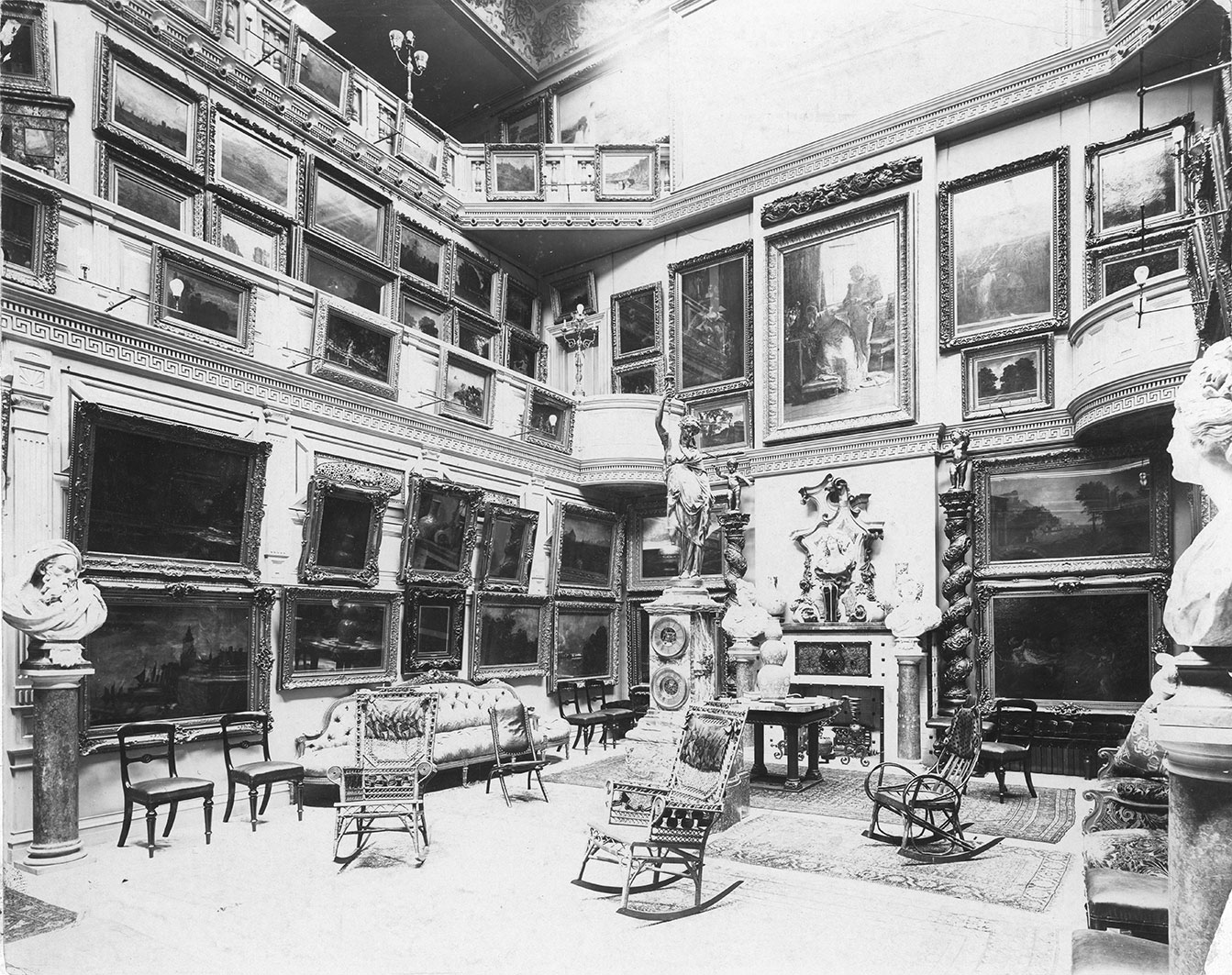
The three-story atrium (in Lambert’s day) houses many pieces from the collection. Photo by Michael Einreinhof of Arclight Images/Courtesy of Passaic County, NJ.
Passaic County, New Jersey Historical Director, Heather Garside, believes tragedy had a role in Lambert’s passion for collecting. She points out that seven of his eight children died well before he did. “Perhaps he was filling a gap,” she says. “His art collection became his baby.”
The baby pictures are found downstairs, in the Historical Society’s library. Research specialist Patrick Byrnes produces an album of some 300 silk reproductions. Lambert gave these to special guests. “That he had it printed on silk tells you how he felt about the collection,” Garside says. Turning its pages is like looking through a book of art history. In addition to the artists mentioned, he had paintings by Tintoretto, Delacroix, J.M.W. Turner and Jean-Baptiste-Camille Corot. The roster of paintings from the 1916 auction includes six by Claude Monet, five by Camille Pissarro and three by Pierre Auguste Renoir. He owned no fewer than 11 paintings by his contemporary, the darkly romantic American artist Ralph Blakelock. Many of Lambert’s auctioned paintings eventually went to museums. Unlike the furniture, they have not been donated back.
The upper floors of the Castle are given over to local history and art, including paintings of the Great Falls, folk art, inventions, sculpture by Gaetano Federici and landscapes by Julian Rix. Everywhere are portraits of important personalities, such as Paterson, New Jersey’s own Garret Hobart, vice president in McKinley’s first term, who, had he not died in office, would have succeeded to the presidency on McKinley’s assassination. Instead, that role went to Theodore Roosevelt.
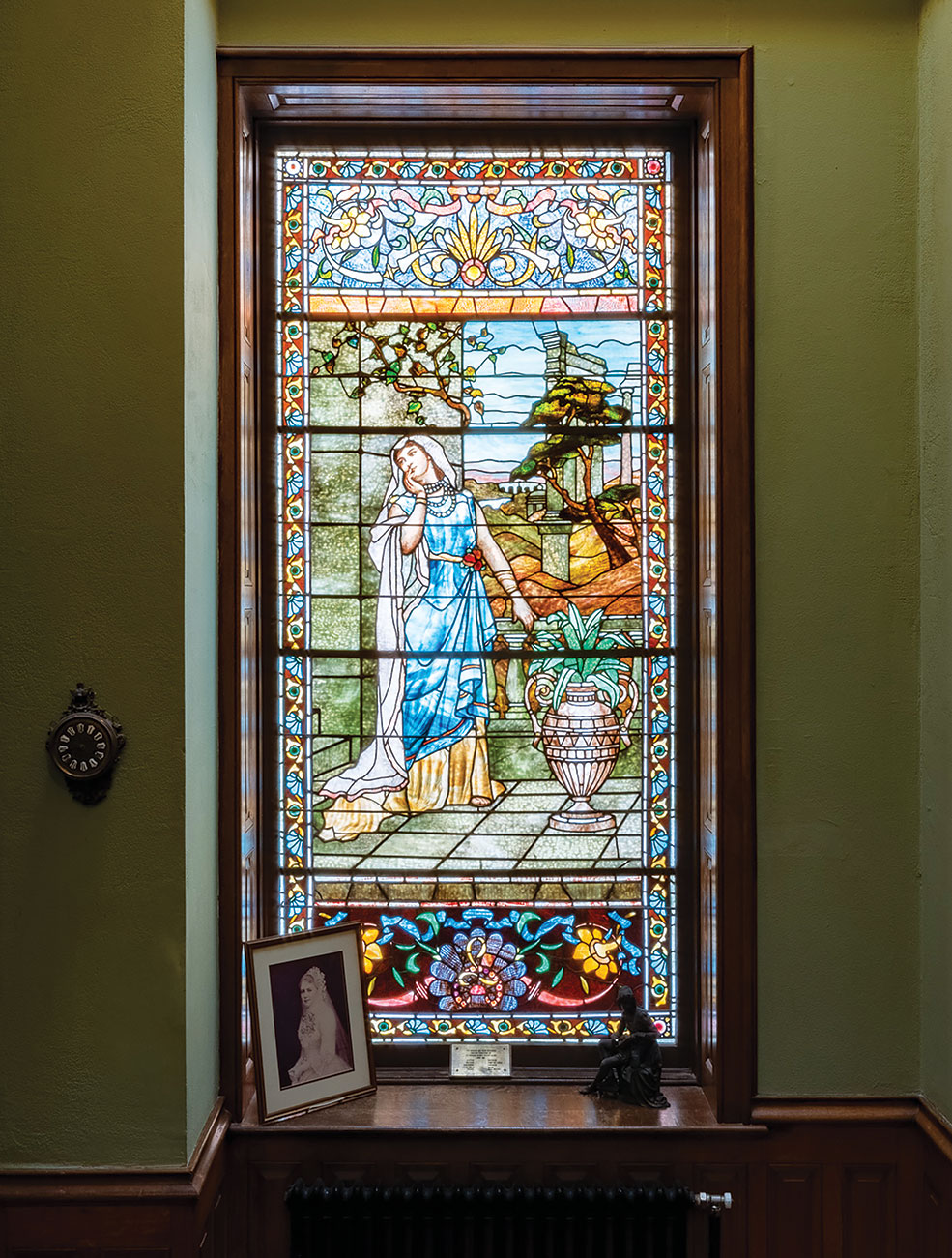
An original stained glass window in Lambert Castle. Photo by Michael Einreinhof of Arclight Images/Courtesy of Passaic County.
In its day, the Botto House had enough open space around it to accommodate rallies with thousands of participants. Today, it is part of a quiet suburban neighborhood of neat houses and trimmed lawns.
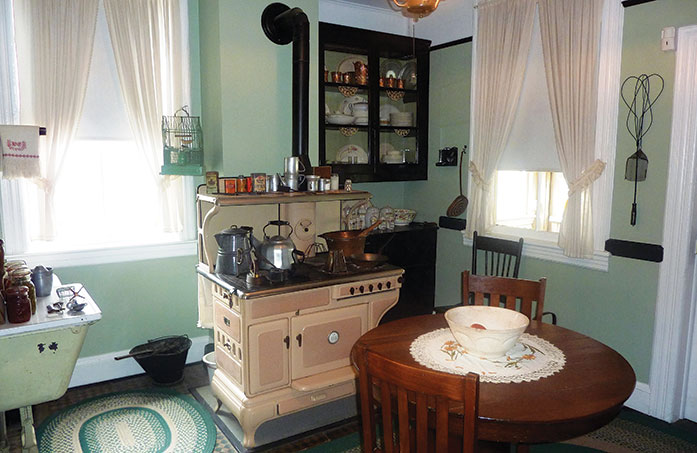
The kitchen in the American Labor Museum is clean, tidy and efficient but without the opulence of the Lambert Castle. Courtesy of the American Labor Museum.
Funds for its renovation were raised from labor unions, which also sent skilled laborers to do the work. Modern alterations, such as metal awnings, were removed. Original colors were restored inside and out. Old doors were brought up from the basement and reinstalled. Likewise, with the old kitchen linoleum. Today, visitors can tour four period rooms that illustrate the life of working people in the late 19th and early 20th centuries. In contrast to the elegant Lambert dining room, the Botto dining room doubled as a work space. In one corner is a “picking frame,” which was used to inspect new bolts of silk for imperfections. Along an adjacent wall is a treadle sewing machine.
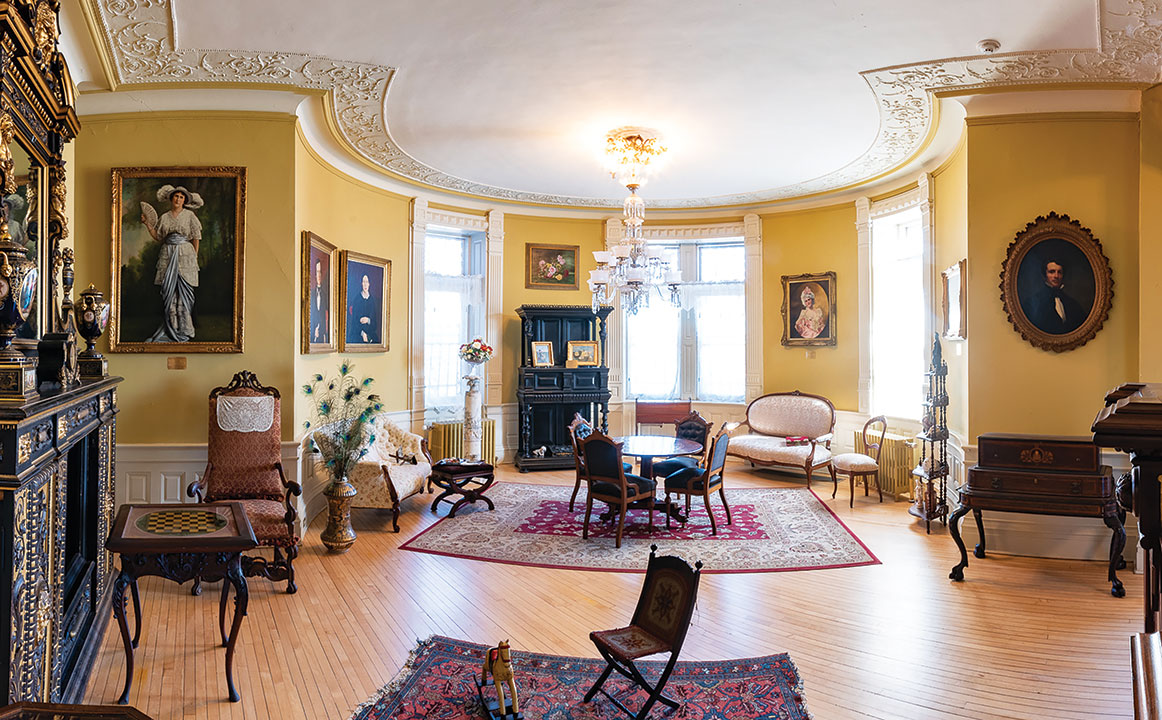
A period room decorated in the style of when Catholina Lambert lived in the home. Photo by Michael Einreinhof of Arclight Images, Courtesy of Passaic County.
The Botto House is called “Labor’s Schoolhouse” for good reason. Upstairs are galleries for photographic exhibits, a museum store and a lending library stocked with books on social history and the labor movement. It has a busy schedule of programs, tours and special events. Every year it plays host to a Labor Day parade, which falls on September 2 this year.
“The 1913 Paterson strike may not have been a success, but the goals it set—an eight-hour day, the elimination of child labor and setting a minimum wage for union workers—were all eventually achieved,” Santomauro points out.
Columnist John Zeaman is a freelance art critic who writes regularly for The Record and Star Ledger newspapers. His reviews of exhibits in New Jersey have garnered awards from the New Jersey Press Association, the Society of Professional Journalists (New Jersey chapter) and the Manhattan-based Society of Silurians, the nation’s oldest press club. He is the author of Dog Walks Man (Lyons Press, September 2010) about art, landscape and dog walking.
